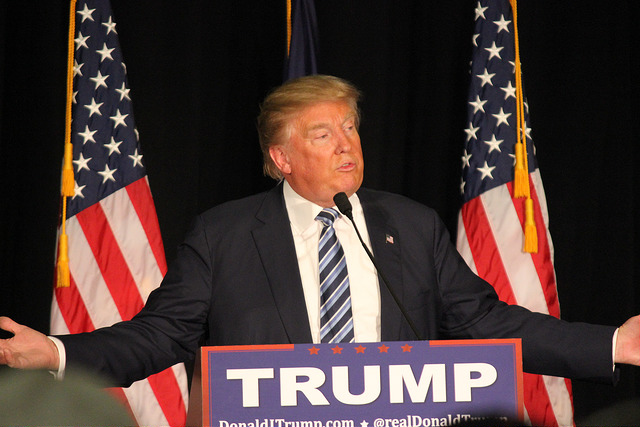On October 19th, Donald Trump finally broke his silence on the issue of the cost of higher education.
For an issue the has was a key component for many voters in the Democratic primary, Mr. Trump has neglected the opportunity to appeal to the Bernie Bros, especially for the ones who contemplated voting for Trump out of protest for Clinton’s Democratic nomination win. Addressing student debt and tuition costs could have been a way for those constituents to legitimately justify the vote for Trump, but instead, the Republican candidate unsurprisingly passed up the chance to appeal to his base.
Still, Mr. Trump’s plan, though not as comprehensive as Clinton’s proposal, does acknowledge and aims to address some of the major components of the student debt crisis: repayment plans and administrative bloat.
Trump calls for colleges and universities to stop spending money on “themselves” and invest in students. His remarks indicate he wants colleges to dip into their own piggy bank, endowments, to subsidized tuition rates—subsidized that used to be provided by states. But the vast majority of colleges and universities in the U.S. have endowments totaling less than $1B and those that do have large endowments already use those funds to make college more affordable to their students.
The key component of Trump’s plan is to increase student loan repayment cap rates from the Obama Administration’s 10% to 12.5% of the borrower’s income and reduce the forgiveness length from the current 20-year maximum to 15 years. So for a borrower who earns $50,000/year with a $30,000 student loan at 4.75% interest (the national average), under Trump’s plan, the borrower will pay just over $100/month more in student loan repayments, but will repay the loan quicker and spend less on interest over time. Sounds like a win-win.
Still, the Trump Administration wants to cut the Department of Education, the nation’s primary provider of public loans. Mr. Trump’s plan fails to address that these loans, if the ED is successfully dissolved, will become privatized. The granting of privatized loans are subject to a number of factors not currently considered for the issuing of federal student loans, including credit scores.
For new high school grads or students who come from less prosperous economic backgrounds, securing these loans will prove problematic. While parents or family members can co-sign for the loan, with current private student loan rates teetering between 9.5-19%, such financing solutions can burden generations with student loan debt.
Mr. Trump’s plan makes sense, but only if it comes with keeping the Department of Education in-tact.


 5 Myths Behind the Rising Cost of College in America: Part 5
5 Myths Behind the Rising Cost of College in America: Part 5